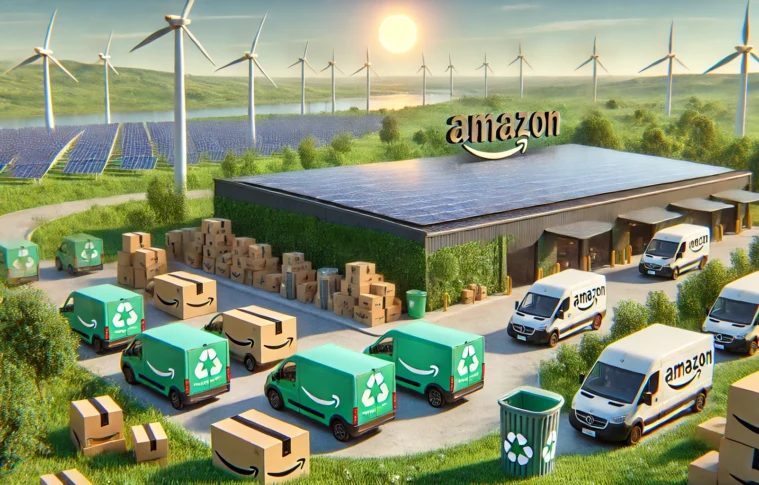Introduction: A Green Vision for E-Commerce
Amazon, one of the largest e-commerce platforms in the world, has been transforming its operations to prioritize sustainability. With its massive global footprint, the company has embraced innovative strategies to mitigate its environmental impact, focusing on renewable energy, eco-friendly logistics, and packaging reforms. This case study explores Amazon’s sustainability initiatives and their impact on the e-commerce ecosystem.
Key Sustainability Goals: The Climate Pledge
In 2019, Amazon co-founded The Climate Pledge, committing to achieve net-zero carbon emissions by 2040—ten years ahead of the Paris Agreement targets. The Pledge underscores three pillars:
Regular Measurement and Reporting: Greenhouse gas emissions are tracked and disclosed consistently.
Decarbonization: This involves adopting renewable energy, reducing material usage, and innovating logistics.
Offsetting Residual Emissions: The company invests in carbon-offset projects like reforestation
Renewable Energy Revolution
Amazon is leading the shift to renewable energy. In 2023, the company achieved its goal of powering its operations with 100% renewable energy. With investments in wind and solar farms, Amazon became the world’s largest corporate buyer of renewable energy in 2022
Real-World Applications:
Solar and Wind Farms: Amazon operates numerous renewable energy facilities, including projects in India, the U.S., and Europe.
Electric Delivery Fleet: Over 15,000 custom electric vehicles (EVs) are already in use globally, with plans to scale further
Sustainable Packaging and Circular Economy
Amazon has introduced measures to optimize packaging:
Frustration-Free Packaging: Designed to eliminate unnecessary materials.
Recycled Materials: The company now uses more than 90% recycled paper in packaging, significantly reducing waste
Example: The Indian Market
Amazon India has shifted toward plastic-free delivery packaging and introduced paper-based mailers and bubble wraps, aligning with local regulations
Climate Pledge Fund: Accelerating Green Innovation
Amazon launched the $2 billion Climate Pledge Fund to support companies developing sustainable technologies. Investments have been made in sectors like:
Transportation: Zero-emission vehicles.
Carbon Removal: Direct air capture technology.
Sustainable Agriculture
Social Responsibility: Greening the Supply Chain
Amazon works with suppliers to adopt sustainable practices, ensuring ethical sourcing and minimizing emissions. Initiatives like the Zero Emission Maritime Buyers Alliance (ZEMBA) aim to decarbonize ocean shipping, critical for global trade
Lessons for E-Commerce Businesses
Integration of Renewable Energy: E-commerce companies can reduce costs and emissions by adopting solar or wind energy.
Efficient Logistics: Transitioning to EV fleets can cut carbon emissions and enhance operational efficiency.
Eco-Friendly Packaging: Sustainable packaging enhances customer perception and complies with regulations.
Conclusion: A Blueprint for the Future
Amazon’s sustainability journey demonstrates that environmental responsibility can coexist with commercial success. By setting ambitious goals and investing in green innovations, Amazon is not only reducing its carbon footprint but also inspiring other businesses to adopt sustainable practices. As consumers demand greater accountability, these efforts are shaping the future of e-commerce.
Disclaimer
Posts in the Notebook are written by individual members and reflect personal insights or opinions. Please verify any information independently. If you have any concerns, notify the admin immediately so we can take action before any legal steps are taken.





